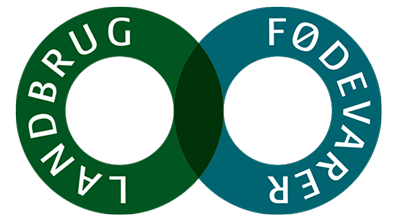Provide stakeholders with the opportunity to complain and pay compensation for any human rights violations
Complaints and compensation
The final step is about the company’s duty to make grievance mechanisms available, and about how you can make sure that remediation is available for victims of human rights violations.
What is remediation?
If a business causes or is directly associated with negative impact on people, the company should repair the damage. The closer the damage is to your company, the more control and influence you will have over possible remedies.
Remedies can be a public apology, restitution, re-employment, financial compensation, sanctions, assurance that the damage will not recur or making sure that the damage is otherwise repaired.
Go back to Step 3: “Take care of negative impacts” for help in assessing how you are associated with a negative impact. See also the decision tree, which can help you assess how you are connected to a possible violation of human rights:
What is a grievance mechanism?
According to international guidelines, all employees must have the opportunity to express themselves to their organisation. A company grievance mechanism should be provided for people to express concerns, complain, point out violations of human rights, etc. This mechanism may serve to curb or prevent otherwise irreparable damage, nip problems in the bud and prevent issues from escalating into conflicts.
Your grievance mechanism can be a mailbox, a dedicated e-mail account, a telephone hotline or a platform on the company website. Another option is a third-party grievance mechanism administered by a trade association, a trades union, a civil society organisation or a multi-stakeholder group. We recommend that you include suppliers and sub-suppliers, and make sure that they have proper grievance mechanisms of their own – perhaps they already have a mailbox for complaints? Ask them.
The grievance mechanism must be accessible to all relevant parties and be readable in relevant local languages. If remote workers or other relevant groups do not have internet access, the grievance mechanism should not be online.
8 criteria for an effective grievance mechanism:
- Legitimacy – company stakeholders must have confidence that the mechanism will ensure that the company is held accountable
- Accessibility – all stakeholders must be aware of the grievance mechanism, and the company must offer adequate assistance to individuals or groups who might be prevented from gaining access
- Predictability – there must be a clear, public procedure, including time frame, for each stage of the complaint process, and clarity about possible processes and outcomes, as well as how changes are implemented
- Justice – to ensure a fair, informed, and respectful grievance process, victims must have access to information, advice, and expertise
- Transparency – to build trust in the system, all parties are kept informed on an ongoing basis and have access to information about the execution of the complaint process
- Compatible with rights – results and remedies must be in line with internationally recognised human rights
- Continuous learning – all experiences are part of a learning process so that the mechanism can be updated and improved to address and counter future complaints and damage
- Involvement and dialogue – the evolution of the mechanism must be based on dialogue with relevant stakeholder groups, and dialogue is employed in addressing and resolving any problems and complaints
Source: UN Guiding Principles on Business and Human Rights #31


How you should handle a complaint
- Confirm receipt of the complaint immediately and provide a timeframe for the complaint procedure
- Make sure the complaint process is transparent to all parties throughout
- Be open and talk to those affected by the negative impact
- Provide adequate remediation and compensation to victims
- Take action to prevent the negative impact from happening again
- Continuously use your experiences to improve the process and promote dialogue in the value chain
Inspiration: This is what a grievance mechanism might look like
Mail or phone
At warfair, complaints and feedback about trade, products and partners can be submitted via email or telephone.
Complaints can be submitted in any language. The process is anonymous and protected.
Complaints are dealt with by warfair’s Ethics Committee based on warfair’s own policy.
Mailboxes
At Gasa Nord Grønt, all nurseries have set up designated mailboxes where employees, protected by anonymity, may submit complaints, ideas or generally criticise or praise management.
Because of this simple initiative several challenges have been dealt with before they turn into real conflicts or problems.
Third party grievance mechanisms
Complaints about negative impacts on human rights in businesses in Denmark may be dealt with by the Labour Court, the National Board of Industrial Injuries, the Equal Treatment Board and others.
For grievances related to companies outside of Denmark, you must go through the National Contact Point Denmark, the Mediation and Complaints Institution for Responsible Business Conduct.
When should you stop working together?
The clear expectation is that your company has an active plan for how to prevent negative impacts on human rights in your value chain. But there is no expectation that you will be able to solve all problems together with a supplier or partner.
We encourage all companies to take a constructive and pragmatic approach to improving conditions, and that you develop solutions together with suppliers. Changing suppliers when you discover issues does not solve the problem. Long-term collaboration based on trust provides a much better opportunity to effect positive change.
Of course, if a supplier repeatedly breaks agreements or does not respect or meet your requirements, you may have to terminate the relationship. However, international guidelines call for the company to first attempt to open a dialogue to help the supplier understand the need to live up to agreements. Your company is furthermore encouraged to assess whether terminating the business relationship may result in further negative impact on human rights.
Case stories from small and medium-sized businesses in the food cluster
How a Norwegian SME in the food industry handled remediation
About this guide
This guide is aimed at small and medium-sized businesses in the food cluster, i.e., companies with between two and 250 employees working in agriculture and horticulture, fisheries, fish farming, agroindustry, food production and ingredients. Human rights due diligence is relevant whether you are in the B2C or B2B market, importing, exporting or have your own production in Denmark.
The purpose of the guide is to assist SMEs perform human rights due diligence, regardless of size and resources of the company. The guide provides inspiration for how to begin and how to strengthen your current processes.
The guide was prepared by the Danish Initiative for Ethical Trade, in collaboration with the Danish Agriculture & Food Council and Arla Foods, and co-sponsored by the Danish Business Authority. The guide may not be changed, reproduced or translated without prior written permission from the Danish Initiative for Ethical Trade. If used in a teaching context, it must be with a clear acknowledgement of the partners behind the development of the guide, crediting them clearly, including use of relevant logos.



